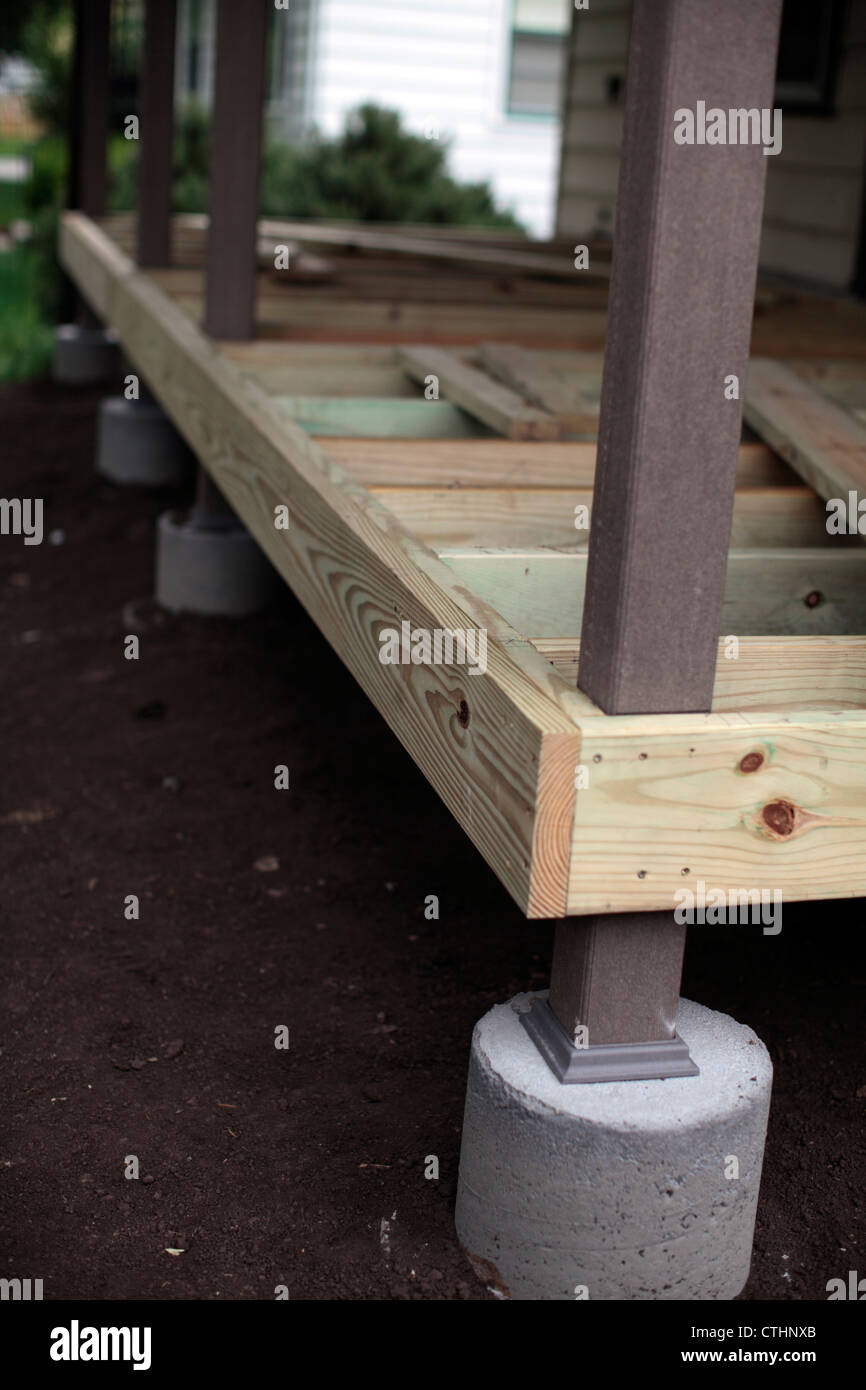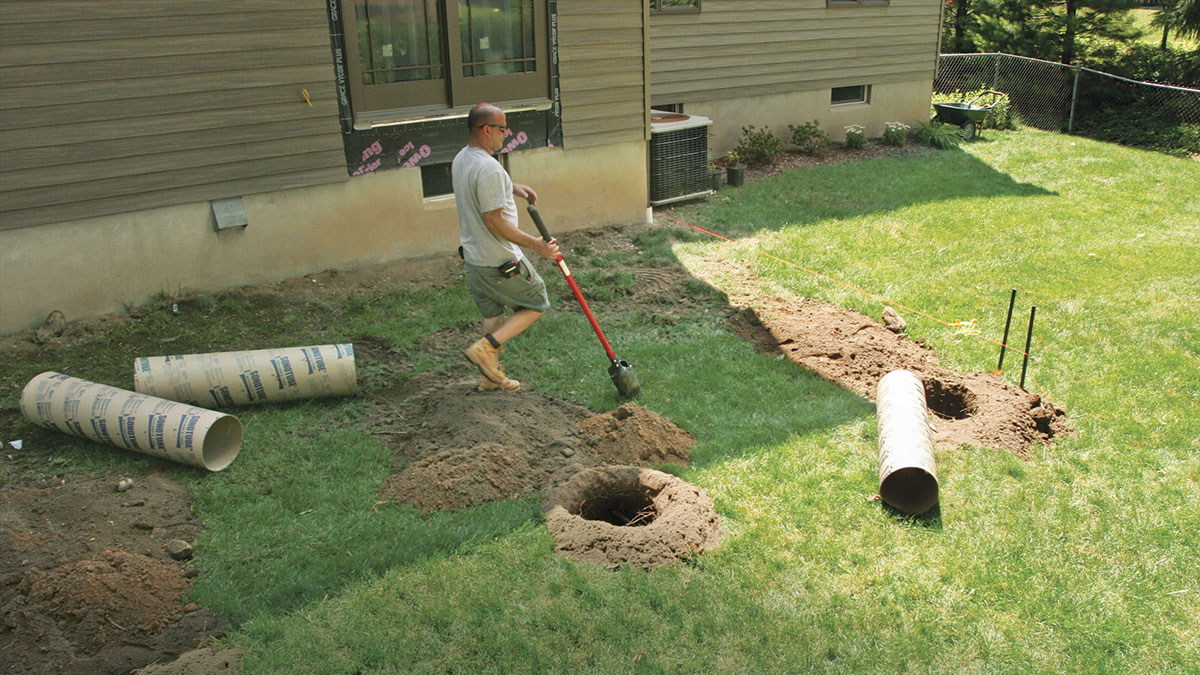Choosing the Right Deck Footings for Stability and Toughness
The long life and safety of your deck depend heavily on the kind of footings you choose, as they offer the crucial assistance and stability to withstand the test of time. In this conversation, we will check out the various types of deck footings, consider the vital aspects to consider when making a choice, and delve into the pros and cons of various choices.
Kinds Of Deck Footings
These footings consist of a cylindrical opening filled up with concrete, which supplies a solid structure for the deck messages. Concrete pier footings are reasonably simple to install and use outstanding security, making them a prominent selection for numerous deck projects.
These grounds are mounted by screwing them right into the ground, which produces a safe foundation for the deck. They additionally allow for simple change and progressing of the deck if required.
Conversely, some contractors select precast concrete grounds. These grounds are constructed from long lasting concrete and come in various sizes and shapes to fit different deck designs. Precast concrete footings are hassle-free to set up and provide a steady base for the deck structure.
Finally, one more choice is the post-in-anchor footing system. This kind of footing involves driving a steel anchor right into the ground and affixing it to the deck message. It supplies flexibility in regards to positioning the deck messages and is ideal for decks with lightweight structures.
When selecting the appropriate type of deck footing, it is necessary to consider aspects such as soil conditions, deck load, and neighborhood building ordinance (Deck Footings). Consulting with an expert specialist or architectural engineer can aid make sure the ideal ground is selected for a steady and secure deck
Factors to Consider When Selecting Grounds
When selecting the suitable grounds for a deck, it is vital to thoroughly consider numerous elements such as dirt problems, deck tons, and adherence to neighborhood building ordinance. These factors play a substantial role in ensuring the stability and longevity of the deck framework.
The type of soil on which the deck will be developed establishes the type of grounds needed. On the various other hand, decks constructed on clay or expansive soils may call for footings that can suit the soil's tendency to broaden and contract.
Another crucial factor is the deck tons. The weight of the deck, consisting of the materials utilized and any possible live tons such as furniture or celebrations, need to be thought about when picking footings. The footings need to be made to bear the weight of the deck and distribute it uniformly to stop any type of structural issues or failures.
Lastly, adherence to local building ordinance is vital. Building ordinance vary from area to region, and it is necessary to adhere to the particular demands set by the neighborhood authorities. Deck Footings. These codes make certain that the deck is developed securely and meets the essential criteria for structural honesty and load-bearing capacity
Concrete Grounds: Advantages And Disadvantages

Concrete footings provide numerous benefits and downsides when used as the structure for a deck. On the positive side, concrete grounds offer outstanding security and longevity.
An additional advantage of concrete footings is their convenience. They can be poured right into various sizes and shapes to suit various deck styles and setups. Concrete footings can be personalized to fit the specific needs and needs of the deck structure.
However, there are likewise some drawbacks more information to using concrete grounds. One significant downside is the price and labor associated with their setup. Concrete footings call for excavation and commonly need the aid of hefty equipment. This can enhance the overall cost of the deck project and may require professional help.

Helical Piers Vs. Sonotubes: Which Is Much better?
In thinking about the foundation choices for a deck, the contrast in between helical piers and sonotubes is important in figuring out the exceptional selection. Helical piers, also called screw heaps, are steel shafts with helical plates affixed to them. They are twisted into the ground utilizing hydraulic equipment, offering a durable and steady structure for the deck. On the various other hand, sonotubes are cylindrical types made from cardboard or fiber product that are full of concrete. They are placed in a hole check out this site dug right into the ground and supply support for the deck.
The helical plates on the piers produce a solid grip with the dirt, shifting or preventing any type of motion of the deck. Sonotubes, on the various other hand, depend solely on the concrete loading for security, which might not use the exact same level of stamina and resistance.
In regards to installation, helical piers are relatively much easier and faster to mount contrasted to sonotubes. The hydraulic equipment used to twist the piers right into the ground ensures a fast and efficient procedure. Sonotubes, on the other hand, require excavating openings and pouring concrete, which can be labor-intensive and taxing.
Additionally, helical piers are an even more functional alternative. If required, they can be utilized in numerous soil problems and can be readjusted or enhanced. Sonotubes, on the other hand, might require extra assistance, such as rebar, in particular soil problems or locations with high lots needs.
Picking the Right Footings for Your Deck's Measurements
For ideal structural stability, it is vital to thoroughly pick the suitable grounds that straighten with the dimensions of your deck. The measurements of your deck, including its length, elevation, and size, play a significant function in establishing the type and dimension of footings required.
When picking grounds go to this website for your deck, it is very important to take into consideration the load-bearing capacity of the dirt. The weight of the deck, incorporated with the weight of any furnishings or people on it, applies a considerable pressure on the footings (Deck Footings). Therefore, it is important to select footings that can appropriately sustain this weight without changing or sinking gradually.
The dimension and form of the footings need to also be thought about. Bigger decks with better dimensions need bigger grounds to offer sufficient stability and assistance. The shape of the grounds, whether they are rounded or square, depends upon the design and format of the deck. Furthermore, the deepness at which the grounds are installed ought to be figured out based upon the frost line in your area to stop any heaving or changing as a result of freezing temperature levels.
Conclusion
In final thought, selecting the appropriate deck footings is essential for ensuring stability and resilience. Elements such as the type of footings, the deck's measurements, and the pros and disadvantages of different options should be thought about.
These footings are composed of a cylindrical hole filled up with concrete, which supplies a solid structure for the deck articles. Concrete pier grounds are fairly easy to install and offer excellent stability, making them a popular selection for many deck projects.
Precast concrete grounds are hassle-free to mount and supply a steady base for the deck framework.
It supplies versatility in terms of placing the deck messages and is suitable for decks with lightweight structures.
Concrete grounds supply numerous benefits and disadvantages when utilized as the structure for a deck.